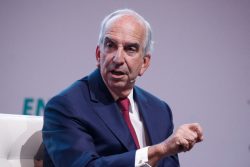Dear Editor,
I was intrigued by the President of Guyana’s recent attempt to redefine “true democracy” at the Commonwealth Parliamentary Conference. While it’s great to see this conversation happening, it’s important to look at the bigger picture.
Direct Democracy, where citizens have the most say in decisions, is often seen as the purest form of democracy. Ancient Athens showed us this, but realistically, it’s tough to make this work in large, diverse societies. The Swiss do a decent job with their cantonal system, which includes referendums and initiatives, but scaling that up is tricky.
For more practical options, Parliamentary and Federal Systems come to mind. The UK’s Parliamentary System and the US Federal System balance effective governance with representation, sharing power between national and regional authorities.
Guyana might consider a Semi-Presidential System as an upgrade. This system mixes presidential and parliamentary elements, with the president handling foreign policy and defense, while a prime minister takes care of domestic affairs. The prime minister is accountable to the legislature, which keeps a balance of power. France is a good example of this approach.
This model could help Guyana balance strong leadership with the need for accountability and representation, tackling both domestic and international challenges more effectively. Of course, the real challenge is making sure any system stays true to democratic ideals. Just look at Hungary, where a Parliamentary System was twisted to concentrate power—definitely a cautionary tale.
At the end of the day, the “best” system depends on a country’s unique context and values. As Guyana thinks about redefining its democratic framework, it’s crucial to keep its own realities in mind and learn from other nations’ successes and failures to create a system that truly works for its people.
Sincerely,
Keith Bernard








